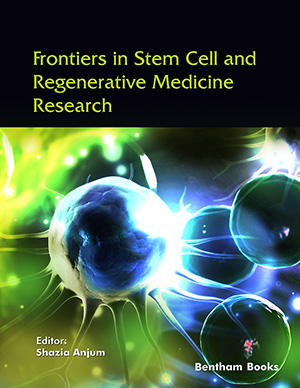
Abstract
Background: Congenital anomalies are responsible for approximately 20% of all neonatal deaths worldwide. Improvements in antenatal screening and diagnosis have significantly improved the prenatal detection of birth defects; however, these improvements have not translated into the improved neonatal prognosis of babies born with congenital anomalies.
Objectives: An attempt has been made to summarise the prenatal interventions, if available, the optimal route, mode and time of delivery and discuss the minimum delivery room preparations that should be made if expecting to deliver a fetus with a congenital anomaly.
Methods: The recent literature related to the perinatal management of the fetus with prenatally detected common congenital anomalies was searched in English peer-reviewed journals from the PubMed database to work out an evidence-based approach for their management.
Results: Fetuses with prenatally detected congenital anomalies should be delivered at a tertiary care centre with facilities for neonatal surgery and paediatric intensive care if needed. There is no indication for preterm delivery in the majority of cases. Only a few congenital malformations, like highrisk sacrococcygeal teratoma, congenital lung masses with significant fetal compromise, fetal cerebral lesions or neural tube defects with Head circumference >40 cm or the biparietal diameter is ≥12 cm, gastroschisis with extracorporeal liver, or giant omphaloceles in the fetus warrant caesarean section as the primary mode of delivery.
Conclusion: The prognosis of a fetus with congenital anomalies can be significantly improved if planning for delivery, including the place and time of delivery, is done optimally. A multidisciplinary team should be available for the fetus to optimize conditions right from when it is born.
Keywords: Congenital malformations, route of delivery, time of delivery, optimal mode of delivery, perinatal management, caesarean section or vaginal delivery.
[http://dx.doi.org/10.1186/s12887-018-1149-0] [PMID: 29801440]
[http://dx.doi.org/10.1002/jum.14561] [PMID: 29476550]
[http://dx.doi.org/10.1080/16549716.2017.1328796] [PMID: 28621201]
[http://dx.doi.org/10.1002/uog.19038] [PMID: 29484752]
[http://dx.doi.org/10.1371/journal.pone.0235971] [PMID: 32678861]
[http://dx.doi.org/10.1515/jpm-2015-0364] [PMID: 27071145]
[http://dx.doi.org/10.1016/j.siny.2017.08.004] [PMID: 29031539]
[http://dx.doi.org/10.1016/j.clp.2012.04.003] [PMID: 22682379]
[http://dx.doi.org/10.1056/NEJMoa1014379] [PMID: 21306277]
[http://dx.doi.org/10.1002/uog.20389] [PMID: 31273862]
[http://dx.doi.org/10.1016/j.jogc.2020.11.003] [PMID: 33212246]
[http://dx.doi.org/10.1002/9780470514559.ch16] [PMID: 8005029]
[http://dx.doi.org/10.1111/1471-0528.15342] [PMID: 29924919]
[http://dx.doi.org/10.1007/s00381-004-1110-4] [PMID: 15703967]
[http://dx.doi.org/10.24953/turkjped.2021.04.016] [PMID: 34449151]
[http://dx.doi.org/10.1016/j.tjog.2021.01.006] [PMID: 33678328]
[http://dx.doi.org/10.1007/s00404-017-4424-7] [PMID: 28634753]
[http://dx.doi.org/10.3171/2020.3.PEDS19613] [PMID: 32916650]
[http://dx.doi.org/10.2174/1573396315666191018161535] [PMID: 31656152]
[http://dx.doi.org/10.1016/j.ajog.2020.08.182] [PMID: 33168210]
[http://dx.doi.org/10.1159/000058428] [PMID: 12053043]
[http://dx.doi.org/10.1111/aogs.13622] [PMID: 30977122]
[http://dx.doi.org/10.1017/S0965539598000345]
[http://dx.doi.org/10.1016/j.ajog.2017.12.230] [PMID: 29305249]
[http://dx.doi.org/10.1007/s00381-011-1556-0] [PMID: 21928022]
[http://dx.doi.org/10.1007/s00381-019-04365-z] [PMID: 31624860]
[http://dx.doi.org/10.1159/000063179] [PMID: 12169810]
[http://dx.doi.org/10.1155/2020/1036073] [PMID: 32685231]
[http://dx.doi.org/10.1080/14767058.2018.1481951] [PMID: 29842812]
[http://dx.doi.org/10.1186/s12884-020-03304-0] [PMID: 33028259]
[PMID: 28725339]
[http://dx.doi.org/10.1016/j.jpedsurg.2003.11.006] [PMID: 15017545]
[http://dx.doi.org/10.1055/s-0037-1618603] [PMID: 29341044]
[http://dx.doi.org/10.1038/sj.jp.7211794] [PMID: 17637787]
[http://dx.doi.org/10.1016/j.jpedsurg.2015.12.010] [PMID: 26831532]
[http://dx.doi.org/10.1503/cmaj.170206] [PMID: 29378870]
[http://dx.doi.org/10.1007/s12262-015-1286-8] [PMID: 26702239]
[http://dx.doi.org/10.1159/000444210] [PMID: 27077664]
[http://dx.doi.org/10.1002/bdr2.1607] [PMID: 31642616]
[http://dx.doi.org/10.1002/bdra.23493] [PMID: 26931365]
[http://dx.doi.org/10.1016/j.jpedsurg.2016.02.001] [PMID: 26932255]
[http://dx.doi.org/10.1111/pan.14339] [PMID: 34797930]
[http://dx.doi.org/10.1097/MPG.0000000000001401] [PMID: 27579697]
[http://dx.doi.org/10.1055/s-0039-3400284] [PMID: 31777030]
[http://dx.doi.org/10.1002/pd.739] [PMID: 14663837]
[http://dx.doi.org/10.1016/j.jpedsurg.2006.10.035] [PMID: 17270561]
[http://dx.doi.org/10.1053/jpsu.2002.30832] [PMID: 11877643]
[http://dx.doi.org/10.1016/j.siny.2009.05.003] [PMID: 19540178]
[http://dx.doi.org/10.1002/ppul.20917] [PMID: 19061226]
[http://dx.doi.org/10.1159/000021037] [PMID: 11111218]
[http://dx.doi.org/10.1002/uog.3944] [PMID: 17444552]
[http://dx.doi.org/10.1055/s-0038-1676339] [PMID: 30574430]
[http://dx.doi.org/10.1002/pd.5477] [PMID: 31093996]
[http://dx.doi.org/10.1016/j.jpedsurg.2017.11.056] [PMID: 29274787]
[http://dx.doi.org/10.1159/000440894] [PMID: 27070354]
[http://dx.doi.org/10.1016/j.prrv.2003.09.009] [PMID: 15222956]
[http://dx.doi.org/10.1016/j.puhe.2003.12.017] [PMID: 15313597]
[http://dx.doi.org/10.1007/s00383-009-2406-y] [PMID: 19551391]
[http://dx.doi.org/10.1007/BF00499460] [PMID: 8982621]
[http://dx.doi.org/10.1016/S0037-198X(98)80043-6] [PMID: 9800246]
[PMID: 19177734]
[PMID: 26713828]
[http://dx.doi.org/10.1016/j.ajog.2021.06.009] [PMID: 34507800]
[http://dx.doi.org/10.1055/s-0029-1225641] [PMID: 20574939]
[http://dx.doi.org/10.3389/fped.2019.00222]
[http://dx.doi.org/10.1016/j.urology.2013.10.054] [PMID: 24411215]
[http://dx.doi.org/10.4103/0971-4065.109403] [PMID: 23716913]
[http://dx.doi.org/10.3390/children7120302]
[http://dx.doi.org/10.1053/j.sempedsurg.2019.04.007] [PMID: 31072463]
[http://dx.doi.org/10.1046/j.0960-7692.2001.00534.x] [PMID: 11778988]
[http://dx.doi.org/10.1016/S0022-3468(97)90601-1] [PMID: 9094013]
[http://dx.doi.org/10.1002/uog.21871] [PMID: 31503365]
[http://dx.doi.org/10.1097/AOG.0000000000000427] [PMID: 25162254]
[http://dx.doi.org/10.1136/archdischild-2016-312394] [PMID: 28970315]
[http://dx.doi.org/10.1097/00006250-200111000-00029] [PMID: 11704185]
[http://dx.doi.org/10.1067/mob.2000.106852] [PMID: 10871475]
[http://dx.doi.org/10.3390/children8020170] [PMID: 33672248]
[http://dx.doi.org/10.1038/s41372-020-0595-3] [PMID: 31992819]
[http://dx.doi.org/10.1002/uog.2710] [PMID: 16456842]
[http://dx.doi.org/10.1016/S0022-3476(89)80605-5] [PMID: 2521249]
[http://dx.doi.org/10.1136/archdischild-2015-308736] [PMID: 26819268]
[http://dx.doi.org/10.1161/01.cir.0000437597.44550.5d] [PMID: 24763516]
[http://dx.doi.org/10.1161/CIRCULATIONAHA.113.005864] [PMID: 24795388]
[http://dx.doi.org/10.1542/peds.2009-3640] [PMID: 20603261]
[http://dx.doi.org/10.1515/jccm-2016-0031] [PMID: 29967858]
[http://dx.doi.org/10.1016/j.clp.2015.11.004] [PMID: 26876121]
[http://dx.doi.org/10.3340/jkns.2021.0015] [PMID: 33906346]
[http://dx.doi.org/10.1016/j.jpedsurg.2010.10.020] [PMID: 21763829]
[http://dx.doi.org/10.1111/j.1442-200X.2008.02703.x] [PMID: 18937757]
[http://dx.doi.org/10.4103/jiaps.JIAPS_219_18] [PMID: 31896894]
[http://dx.doi.org/10.3126/kumj.v6i3.1717] [PMID: 20071824]
[http://dx.doi.org/10.5662/wjm.v7.i3.93]
[http://dx.doi.org/10.1186/s12889-018-5421-x] [PMID: 29661170]
[http://dx.doi.org/10.1016/j.bjorl.2015.10.020] [PMID: 26997574]
[http://dx.doi.org/10.1177/1941406412447237]
[http://dx.doi.org/10.1007/s40368-013-0101-0] [PMID: 24425528]
[http://dx.doi.org/10.1111/cga.12412] [PMID: 33583092]
 26
26 3
3




























